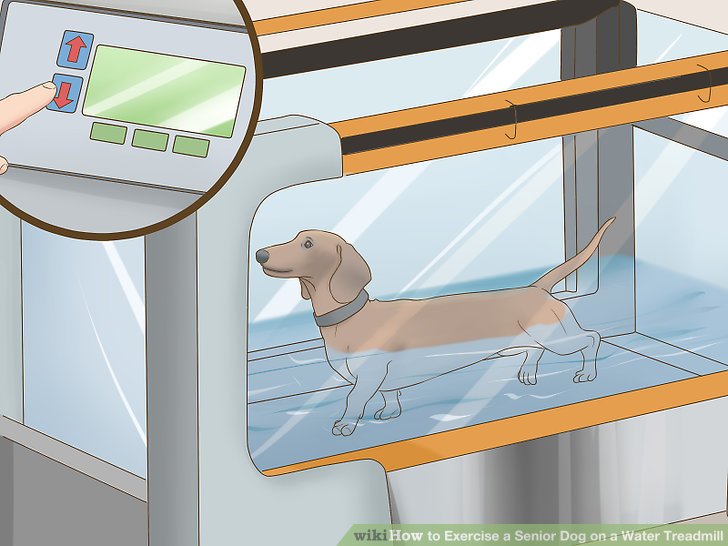Laurie's Blogs.
Dec 2018
Water Walking Research

I came across an interesting abstract on the internet and I wanted to share it with you. It’s about underwater treadmill use and muscle activation. It was specific to the gluteals and the longissimus dorsi… but interesting never the less, and I spent some time scratching my head to figure out the ‘take home’ message. Or the “why do you care?” from the research... but I think I figured it out!
Anyways, here’s the abstract:
Parkinson, S., Wills, A., & Williams, J. (2017). How does muscle activity change with water depth in dogs walking on an underwater treadmill?. Poster session presented at Society for Experimental Biology Conference 2017, Gothenburg, Sweden.
Canine rehabilitation is a rapidly developing area of veterinary medicine with an increasing range of techniques such as physical therapy, massage and hydrotherapy becoming widely available. The aim of these therapies is to restore animals to full health post-operatively, manage long-term conditions and promote fitness. Equine and canine kinematic research has found a relationship between water depth and kinematic parameters, however, there is limited research assessing the change in muscle activity with increasing water depth. The aim of this study was to investigate the impact of water depth on the muscle activity of dogs when walking on an underwater treadmill (UWT). Surface electromyography was used to assess muscle activity of the gluteus medius (GM) and longissimus dorsi (LD) of clinically sound dogs (n = 7) that were habituated to the UWT. Muscle activity was recorded at water depths of no submersion, above the tarsus, above the stifle and the midpoint between the stifle and the greater trochanter. Kinematic measurements were performed to calculate motion cycle sequencing. There was a significant decrease (p<0.01) in muscle activity between the depth above the tarsal and depths above the stifle, and at the midpoint between the tarsal and the greater trochanter in both the GM and LD. This suggests that UWT exercise at a water depth directly above the tarsal results in the greatest GM and LD muscle activity. These findings may help to inform future exercise and rehabilitation protocols for UWT exercise in dogs.
Okay! So, let’s dissect this! Bottom line is that higher water meant less muscle activation in the Glute Med and Longissimus.
My first reaction was, ‘Well then, not much of a conditioning tool!’ However, we don’t know the speed of the treadmill or the gait of the dog (i.e. walk vs trot). Two variables that might make a difference.
Then I thought, ‘Okay, are we really using the UWT to make the muscles work MORE than on land or at ankle height water?’ No… not really, otherwise, we’d just make the dog walk on land, right? Clinically, we are using the UWT to provide a safe reintroduction to limb use (in the post-op ortho dog), or functional repatterning (in the neuro dog), or easier therapeutic exercise (in the arthritic or deconditioned dog). In all of these scenarios, we are wanting the exercise to be less taxing on the joints and muscles so as to allow use of the limb(s) without causing harm. As such, reduced muscular effort to complete the task (i.e. walking) is exactly what we are hoping to achieve! Am I the only one, but I had never thought of it that way?!! I had always thought about ‘off-loading’ the joints and reducing body weight with the buoyancy of the water, but never about reduced muscle activity. Fair enough!
Now, because the abstract does not tell us the speed of the dog / gait pattern in the underwater treadmill, it leads to my next question. Is there a speed or gait pattern whereby exercising in an UWT would increase muscle activity as compared to land? We tend to think of the resistance of the water as being a variable that could equate to an increase in muscular activity or exertion. But is this accurate? Who knows! Looking for a research project? I think I just created one!!!
Have some thoughts of your own on this bit of research? Please feel free to share with me!
Cheers! Laurie


